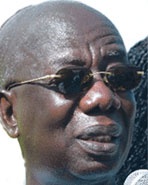
Accra, Aug. 29, GNA - The Government White Paper on the Presidential Commission on Pensions has accepted a three-tier pension scheme to replace the current system.
The idea is ensure a retirement income security for Ghanaian workers, Mr Kwadwo Mpiani, Chief of Staff and Minister of Presidential Affairs, said on Tuesday.
The Government Commission on Pensions chaired by Mr Thomas Bediako, a Retired Educationist, had recommended the three-tier system in its initial report.
Explaining the system, Mr Mpiani said the first tier was a mandatory Basic State Social Security Scheme to be administered by a structured Social Security and National Insurance Trust (SSNIT), which would pay only periodic monthly and other pension benefits, such as survivors and invalidity benefits.
The new system would be a defined benefit scheme, benefiting from a portion of contributions from the employee and the employer to SSNIT, with both paying five per cent and 12.5 per cent, respectively. "SSNIT will not pay the 25 per cent gratuity lump-sum under the new scheme."
The second-tier, also a mandatory, privately managed occupational pension scheme is a defined contribution pension scheme paying mainly annuities to enhance monthly pension benefits.
The legislated contribution of four per cent would be hived off SSNIT, while the employer and the employee in equal proportion would contribute the remaining one per cent.
Mr Mpiani described the third-tier as a voluntary private pension scheme in line with the provisions of the Long-Term Savings Act (LTSA), 2004 (Act 679), which offered attractive tax incentives. Additionally, existing provident funds and similar schemes, which may want to take advantage of the third-tier, would have to modify their rules to comply with the provisions of the LTSA.
He said the total payroll tax exemptions for the contributions to all the schemes under the three-tier pension structure should not exceed 35 per cent. "Pension benefits must also be tax exempt," the Commission said. On the advantages of the three-tier system, the Final Report said it would pay improved pension benefits, especially the lump-sum, which would average 60 per cent more than what CAP 30 pays at present and about five times what SSNIT would have paid.
"It is almost cost-neutral, which means that there will be no significant cost burden on contributors, notably the employer and employee, while workers will have better control over their pension benefits under the second-tier to be privately managed." The second and third tiers would be more flexible in meeting the different needs of employees because contributors may have access to some funds for specific needs prior to retirement.
The third tier will attract additional tax incentives and improve income placement ratio.